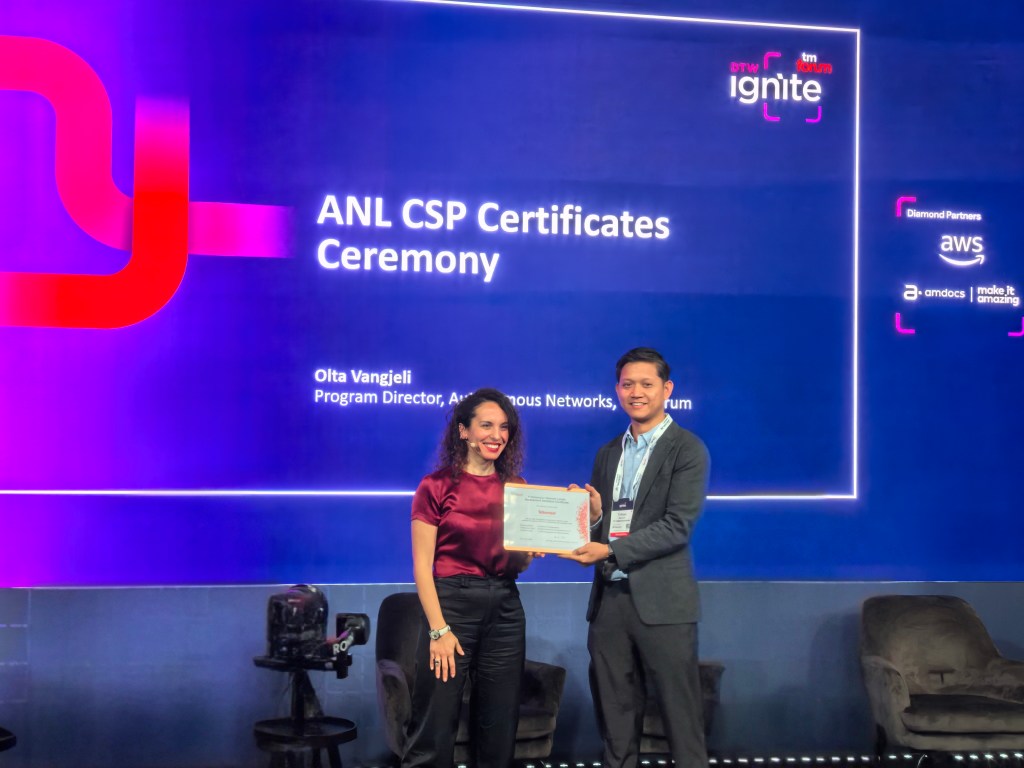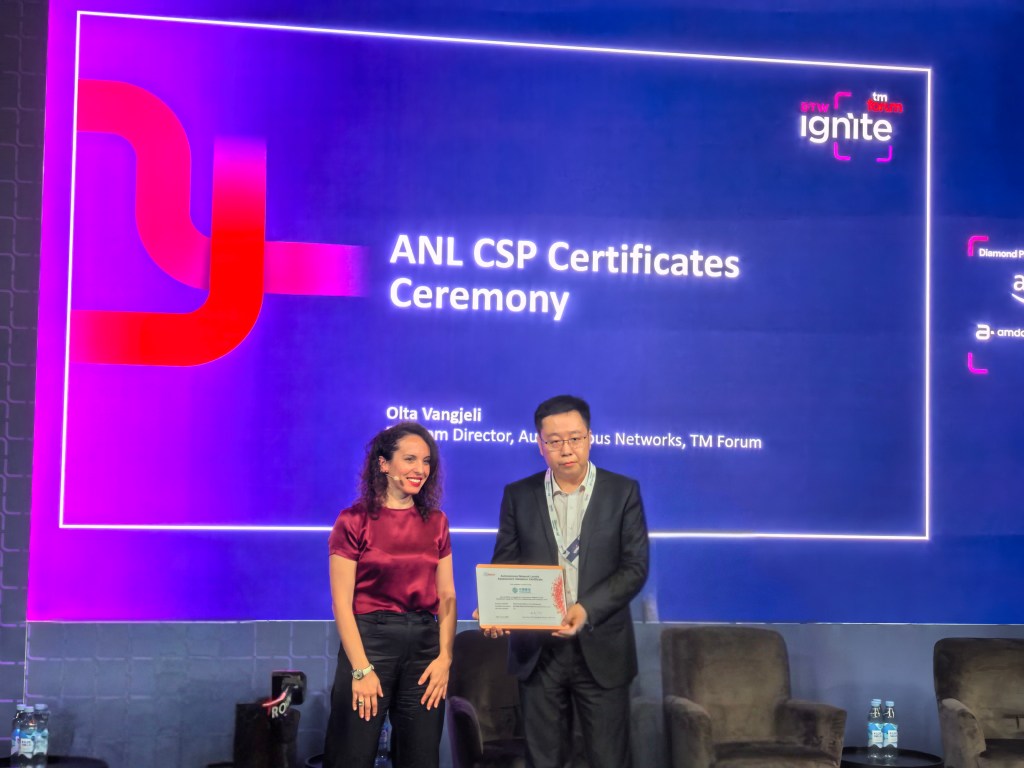Equinix to build £3.9bn Hertfordshire data centre
Equinix plans to invest £3.9 billion in the project, which will deliver 250+MW of compute
Network operators have long aspired to build ‘zero touch’ networks: communication systems that are fully autonomous, adapting to users’ needs in real-time without the need for any manual human intervention. But while this final step remains out of reach – at least for now – major progress is being already made by the industry in automating their networks, unlocking major efficiencies and cost savings.
What exactly do we mean when we talk about the term ‘autonomous networks’? TM Forum provides a useful framework to answer this question, with their Autonomous Network Level (ANL) Model helping operators to assess their current level of network autonomy. These Levels range from 1 to 5; Level 1 represents no autonomy at all, while Level 5 denotes a fully autonomous, self-driving network, with no human intervention at all.
With the integration new technologies, particularly the use of AI agents and predictive AI, CSPs are rapidly climbing through the ANLs, with many on the brink of achieving ANL4. This means their networks are highly autonomous across various domains, with the system making automated decisions based on predictive analysis and AI modelling, with only minimal human oversight.
Achieving the crucial step to ANL4 was the focus on a masterclass on the final day of DTW called ‘ANL4 Solution Packages Blueprint: From Vison to Deployment’, explaining why ANL4 is so valuable and how to implement existing solution packages.
ANL4 and the core network
The first part of telco networks to benefit from the ANL4 transformation will be the core. It is here that we find several well-defined use-cases that are becoming increasingly viable with the increase integration of AI into telco networks.
Chief among these use cases is the integration of AI agents. These agents have enormous potential across the telecoms industry, from advanced customer-facing chatbots to virtual assistants for telecoms engineers. But perhaps the most impactful role of AI agents will take place within the network itself, helping to automate the fault demarcation process.
Traditionally, fault demarcation has required manual analysis across multiple network layers and domains to discover and correct the root cause of network issue. AI agents can automate a large part of this process, using machine learning models to correlate alarms, analyse logs, and isolate the source of a fault in real time. This allows operators to respond faster and reduce mean time to repair and service disruption.
However, letting AI agents loose in the core network must be done with great caution. The core is an environment where a single automation misstep could impact thousands or potentially millions of customers, hence reliability is paramount. Specialised, telecoms-specific AI models will be required to meet these demands, and strict guardrails will be needed before the highest levels of automation can be reached.
In addition to helping operators react to network faults more efficiently, AI is also helping them to anticipate and avoid them altogether. Predictive AI is increasingly being applied to day-to-day operations and maintenance (O&M) within the network, particularly for monitoring and managing risks like signalling storms. By combining this technology with a digital twin of the network, capable of simulating a myriad of scenarios, operators can quickly visualise and assess their network’s vulnerabilities.
In short, the core’s journey to ANL4 will see it become increasingly predictive and preventative when it comes to maintenance, and self-healing when faults do occur.
ANL4 in action in Asia
Many of the above use cases are already being seen in action in some of the most advanced markets in the world. At the masterclass at DTW, two operators – Telkomsel and China Mobile–were singled out by TM Forum as being ‘outstanding’ in this regard. Having undertaken a thorough evaluation of their autonomous core network high stability evaluation, the two companies received their formal certification at the event and were invited to share key success stories.

Telkomsel receives the company’s ANL CSP certificatate from TM Forum’s Autonomous Networks Program Director, Olta Vangieli

China Mobile receives the company’s ANL CSP certificatate from TM Forum’s Autonomous Networks Program Director, Olta Vangieli
China Mobile has notably already achieved operational ANL4 in eight key core use cases, including private network provisioning, complaint resolution, change monitoring. The company is also nearing ANL4 across multiple additional domains, including IP backhaul, RAN fault management, core complaint handling, and core fault management. Combined, this work has reportedly achieved an 80% reduction in major network faults and saved more than 7 billion kilowatt hours of electricity.
Indonesia’s Telkomsel has also made great strides, sharpening its focus on core network stability and intelligent operations. Their progress includes a significant shift in their network design, using AI to help support network architecture design. This has made the network significantly more flexible, building in redundancy by design and allowing specific elements to be bypassed for quick service recovery. Combined with predictive AI that can anticipate and negate risks to the network, Telkomsel is well on its way to achieving zero outages in its core network.
Collaboration and building solution packages
Naturally, building more intelligent telecoms network is a hugely complicated task. The sharing of best practice across the industry will be a key factor in success and is something that the TM Forum and its partners have sought to facilitate over the past 6 years. To this end, various solution packages have been co-developed by industry to promote best practices for operators on this journey.
At the masterclass, for example, Huawei’s Michael Wang shared the ANL4 high-value scenario solution package, featuring end-to-end guidance on core network fault management. From designing intelligent O&M, to network optimisation strategies and best-practice case studies, the solution package provides a valuable blueprint for operators to take begin their own network transformation projects.
TM Forum and its industry partners are currently calling for volunteers throughout the industry to further optimise the released standards and collaboratively define more high-value solution packages, three of which are planned to be released by the end of the year.
ANL4 is achievable today
With numerous positive examples already on display in various markets worldwide, and with increasingly sophisticated standardisation materials broadly available, operators’ path to ANL4 is becoming clearer. As momentum continues to build, it will not be long before the most advanced operators fully achieve this goal and begin setting their sights on the lofty goal of ANL5.
Also in the news:
SWR deploys Europe’s first ’Rail-5G’ Wi-Fi
BT accelerates fibre rollout amid cost cuts
AT&T agrees $5.75 billion deal for Lumen’s consumer fibre asset
Equinix plans to invest £3.9 billion in the project, which will deliver 250+MW of compute
Key takeaways What Is Imagine Lens—and Why It Matters Snapchat’s Imagine Lens lets us create…
Packages downloaded from NPM can fetch dependancies from untrusted sites.
Exclusive Edge, Atlas, Brave among those affected
A critical, currently unpatched bug
The announcement brings Amazon’s total pledged investment in South Korea to $9 billion over the